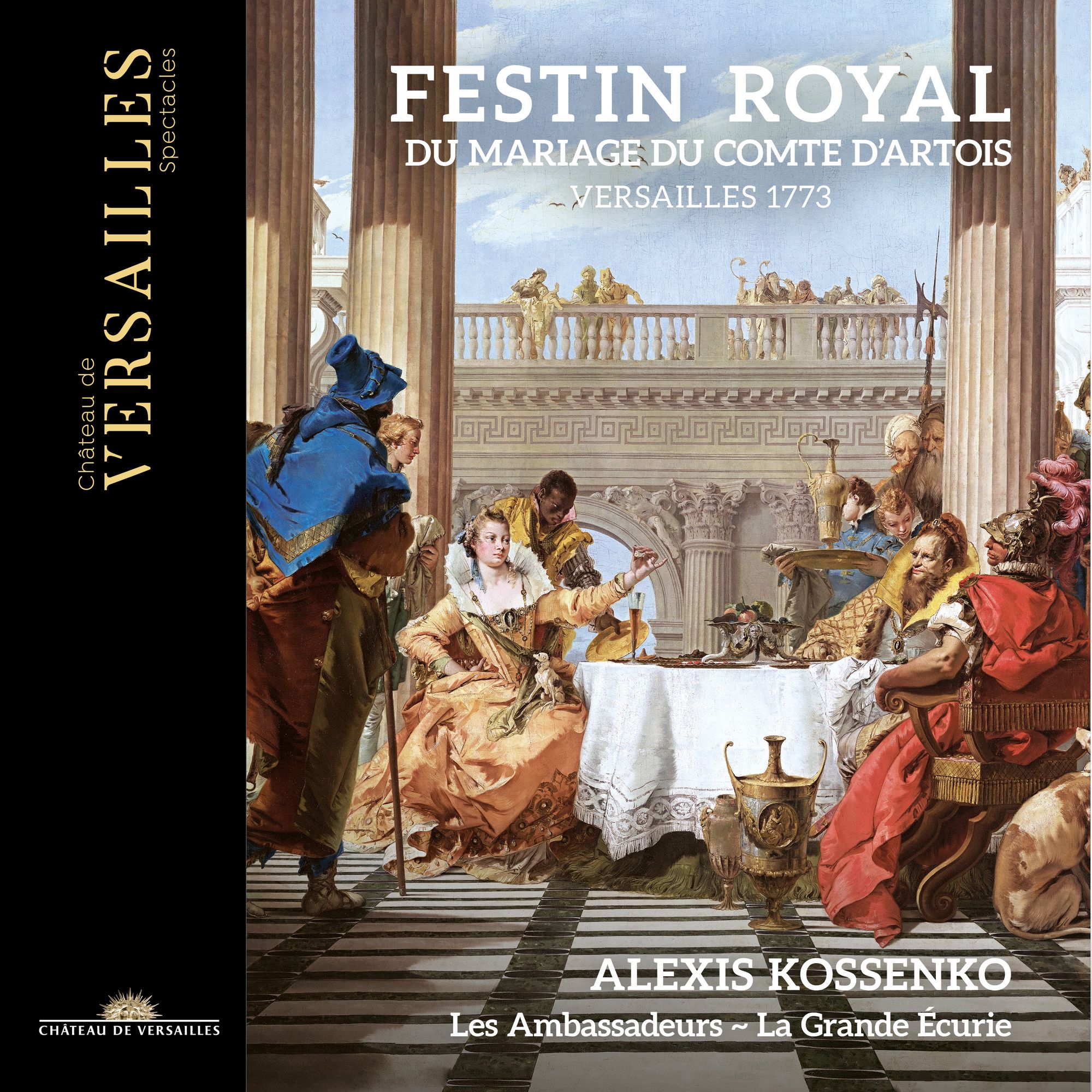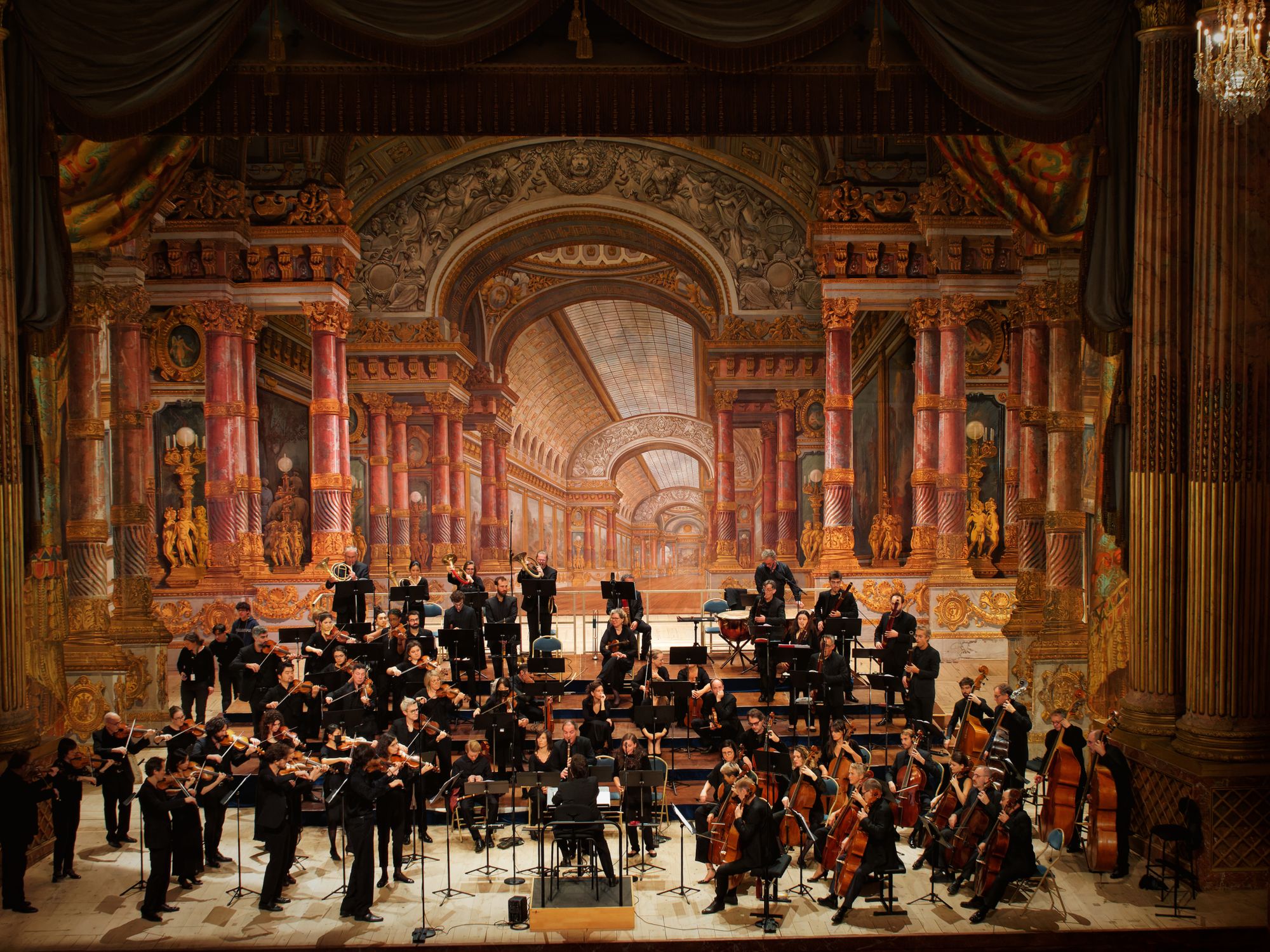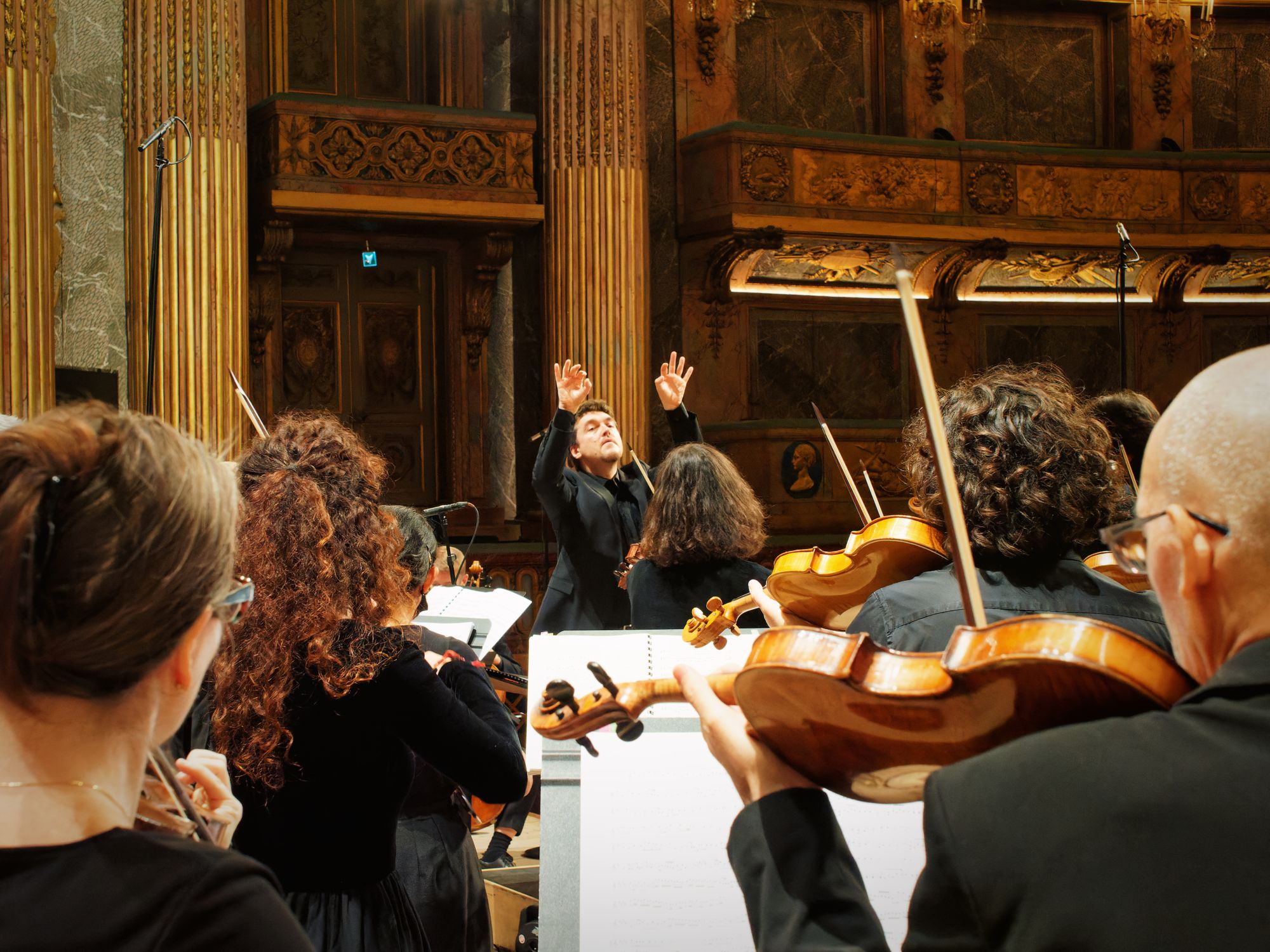Festin Royal du Mariage du Comte d'Artois, Versailles 1773

Music for a royal banquet!. Mid-1770s Versailles was immune to the revolutionary ideas already brewing in Paris. A succession of weddings was arranged to ensure the continuity of the throne, post-Louis XV: the Duke of Berry (1770), the Count of Provence (1771) and, germane to our purposes today, the Count of Artois (1773) - Louis XVI, Louis XVIII and Charles X respectively. It is the “Sinfonie du Festin Royal de Monseigneur le Comte d”Artois Année 1773” we hear here, in superb performances recorded at Versailles itself.
Music was an integral part of court life at Versailles, and it is no surprise that it suffused the great occasions. It was François Francoeur who arranged the present suites, folliwing in the tradition of Michel-Richard de Lalande (and Lalande’s Symphonies pour les Soupers du roi).
The present set presents four suites (two per disc). The sheer vivacity of these performances has to be heard to be believed - try the “Air gay” from Ené et Lavinie (1758) by Antoine Dauvergne, itself followed by the suavest Rondeau from Pancrace Royer's Zaide (remember him - and this piece?: see this post of Christophe Rousset’s Royer disc on Aparté) - itself crowned by the most phenomenal hunting piece, with raucous horns. Don't let their seemingly out of control demeanour fool you - listen to how the lip trills are perfectly in sync with the tutti at the end of phrases.
Here’s a taster from a concert given just a week or so before this recording by the present performers (the video is from September 24, 2022; the discs were recorded in Versailles’ Opéra Royal in early October of that year):
The Château de Versailles performances are terrific - try the emotionally wide-ranging Chaconne by Francœur himself (‘Air ajouté au Ballet de la Paix,’ Ipnis et lante, 1738).
That first suite includes music by Francœur, Pierre-Montan Beron (1727-1780), René de Galard de Béarn, Marquis de Brassac (1698-1771) as well as Dauvergne and Royer. The Second Suite begins again with Francœur, but introduces a familiar name, that of Jean-Philippe Rameau, who provides the second and penultimate items, including an 'Air majestueux' from Les Fêtes de l'Hymen et de l'Amour (1747). Dauvergne’s ‘Air très vif’ is like Handel on steroids; Francœur's ‘Air marqué’ from Felicité (1745) has a stately grandeur underpinned by somewhat primal percussion - a fascinating juxtaposition.

It was Titon et l'Aurore at Versailles that converted me to the Mondonville cause once and for all, and we covered a DVD/Bluray of an Opéra Comique production on Classical Explorer. Here, we have a couple of Gavottes from Mondonville’s 1742 pastorale héroïque, Isbé, music which contains the greatest refinement. The performance is impeccable, the fluidity of the woodwind (bassoons especially) perfectly light and dance-like. Les Ambassadurs - La Grande Écurie is a top-notch Baroque ensemble, without doubt. Two Rameau gavottes (from Dardanus) and a jolly contredanse by Francœur close the suite.
The second disc begins with the Third Suite, and the grand strains of the march from Rameau’s Les Fêtes de l'Hymen et l'Amour. It is followed by two pieces by Bertrand de Bury: an ‘Air lent’ (brave horn players here) and a ‘Rondeau lèger,’ both from Hylas et Zélis (1762) - and both pieces make me want to know a lot more about de Bury. We also meet Joseph Hyacinthe (!) Ferrand (1709-1791) on thsi disc, a charming “Rondeau gracieuse” from Zélie (1749).
Few Baroque pieces can match the sheer vim and verve of a piece by anotehr coposer new to me: Jean-Claude Trial (1732-1771), his ‘Contredanse vive’ from La Fête de Flore (1770), performed with rip-roarind passion by the present performers, who dig into the fast passagework as enthusiastically as they ground the music in pedal notes. The extended (eight-minute) Chaconne by Francœur that follows (from Le Prine de Noisy, 1749) is the perfect antidote, a complete adventure inand of itself, navigated brilliantly by Kossenko and his forces, who nevertheless seem to olay with the freshness of naive discovery, almost as if sight-reading. It's a great combination.
That Francœur Chaconne and the next chaconne (by Berton) offer two extended pieces together, giving the third suite a particular end-weight. Pure gravitas.

The Fourth Suite is subtitled, ‘Melée de Trompette, Timbales et Cors’. The Rameau Ouverture (to Zais, 1748) builds to the most tremendous climax, almost threatening to spill over with its raucous energy. The woodwind choir sound in tehe Menuet gracieux from Le Temple de la Gloire (1745) has to be heard to be believed before a scampering Rondeau from Dardanus brings the Rameau group to a close.
It is Francoeur who soothes our spirits wth an ‘Air tendre’ from Rosière de Salency (1769), a piece that contains some remarkably daring textures and in which a nasal bassoon sings gloriously. Louis Granier (1725--1800) is another new name to me, his ‘Air gracieux,”’ yes, full of grace, but this is a decidedly outdoorsy grace, leading naturally to the hunting sounds of Dauvergne (the entrance of the hunters from Enée et Lavinie). And what a lovely dismissive gestire from the players at the end!
After a selectio of rondeaux, Mondonville’s Titon makes an appearance in a Musette coupled with a second Musette, this time from that composer’s Le Carnaval de Parnasse (1749, an opera itself recently staged by Versailles). Kossenko gives the Titon excerpt an almost timeess, suspended quality that is truly beautiful, but the Carnaval Musette makes me ache to hear the complete piece,
The Chaconne from Royer’s Pyrrhus (1730) only stokes my curiousity about this composer even more. Sophisticated and yet unpredictable, with a voice of his own, there is much to enjoy here. It is Rameau who closes proceedings, though, a couple of zippy Tambourins from Dardanus.
We have met Rameau’s Dardanus before, remember, on this cpo release (coupled with musicfrom Pigmalion).
This is an exhilierating romp around the French Baroque world circa 1773. I would love to hear Les Ambassadeurs - La Grande Écurie live. If this is the level of excitement they can generate on disc, who knows what they can do in person!
It is I suppose a measure of the times and how much research has been undertaken that makes these performances so very different from the Erato LP of Symphonies du festin royal de Monseigneur le Comte d'Artois recorded on LP by Maurice André and the Orchestre de chambre Jean-François Paillard under Paillard himself (originally released on STU 70316). The LP presented both the Fourth and Second Suites and was recorded in 1966 in Église Notre-Dame-du-Liban, in Paris. Both performances, Kossenko and Paillard, do go for the ceremonial though, and one has to accept Maurice André was one of the supreme trumpet players of all-time (is it sacrilege to call him the Dennis Brain of the trumpet?). The Erato recording quality itself might now sound a bit ragged, but the horns go for the hunting elements with élan. Yes, the slow Rondeau by Francœur does not pass muster these days, far too syrupy and Romantic. But these performances retain a real charm and nergetic force and can be found today as part of a fastinating 14-disc set simply entitled French Baroque Music on Erato/Warner (Spotify link below). While the Second Suite is almost complete in the Paillard (omitting only the final Francœur Contredanse), the Fourth Suite presents extended excerpts - nine movements as against Kossenko’s 14.
This post goes up on the day of the UK release of the Château de Versailles Spéctacles twofer.
